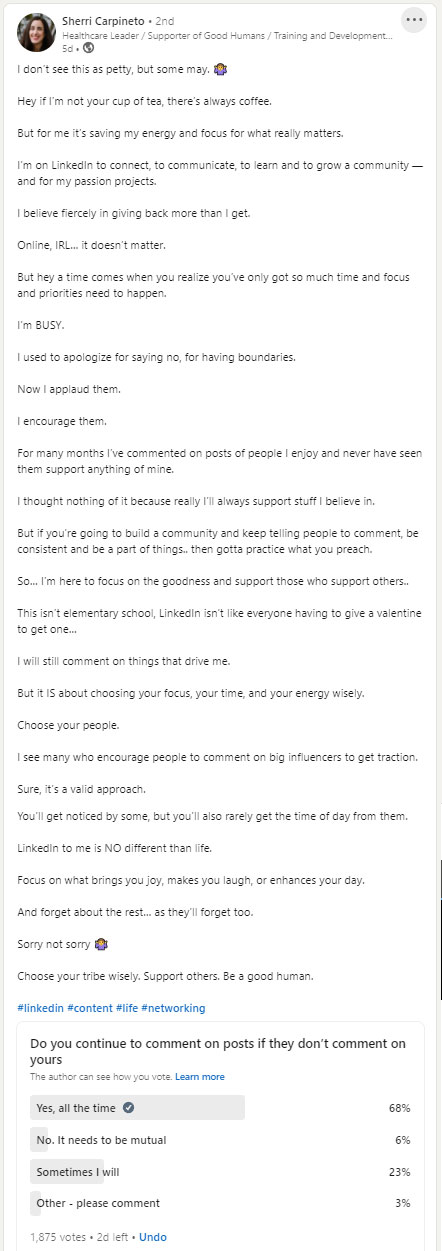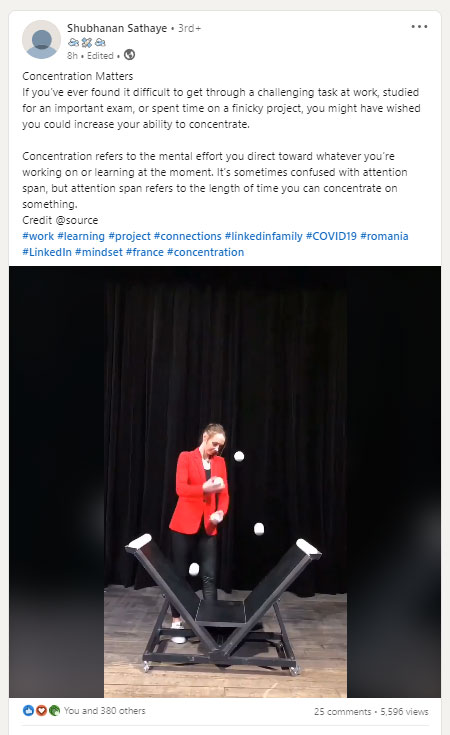
There was a theme that topped and tailed my public discourse this week, and it was the way that balls can capture attention and bring joy at the same time.
Welcome to TWOLI, aka This Week On LinkedIn, in which I share some of the comments I shared for the benefit of faculty and students who haven’t been as glued to their devices as one might expect.
One man’s baubles
The first story this week, is based around a simple observation I shared when I saw the ever-dazzling Group MD and CEO of the Maras Group, Steve Maras, sharing photos of his colourful balls on LinkedIn.
There have been comments and even media coverage following these baubles, and I was one of the first to comment, thus:
Steve, your baubles will bring joy to many people.
I was not only delighted that Steve liked my comment, but quite heartened to see that my comment was in keeping with the spirit of the community.
Balls here, balls there
Lo and behold, at the end of the week, balls featured again, in this post by Shubhanan Sathaye. I encourage you to click on the image below to see the stunning video.
This was a glorious post to wake up to, and it prompted me to share this reflection:
I’ll go out on a limb and say that everybody should have something like this at the office.
With the focus required, after a few years of lost productivity due to taking time out to train while on the job, imagine how improved discipline and attention-to-detail would become, all due to playing with your balls at work.
I might “get the ball rolling”, as it were, by ordering a kit this week if enough students are interested in playing with my balls during tutorials.
As an aside, I’m deeply curious about how messy it will be while learning the right hand positions, and whether or not for some people it will just come naturally.
I’ll report back if any students do put their hands up.
Do you continue to comment on posts if they don’t comment on yours?
Sherri Carpineto ran a poll on LinkedIn, around the question of whether or not we should continue commenting on the posts of other users if they do not reciprocate.

I not only voted, Yes, All The Time, but I also commented on Sherri’s post.
I do it because as an advocate of MBA Thinking, I believe it is my bounden duty to illuminate the shadows of habitual thinking and instinctive reactions with the light of models and evidence-based frameworks. As the old saying goes; pluck a weed, plant a flower.
Ironically, Sherri has not commented on my comment.
Agile 101
Agile is a methodology for project management and Thabet Mabrouk shared a basic overview of “Agile”, which has prompted much commentary.
I was grateful that Thabet phrased the post as a question, because it compelled me to do some MBA Thinking in bed, and reply, thus:
What would I miss? Well, my students ran a simple addition/subtraction matrix over the propositions and determined you might miss your deadline. Here’s why:
– Put people first (slow -1)
– No push (slow -1)
– Show agile values in whatever you do (fast +1)
– Talk less, listen more (slow -1)
– Don’t rush advice. Understand the problem first (slow -1)
– Let people pull from agile practices to solve their problems (neutral)
– Support people each day to make small experiments (slow -1) and deliver customer value a little bit quicker (fast +1)This adds up to -3.0 which would mean it would be best described as Slow Agile. Market it in a similar way to the Slow Food movement, and this could be quite popular.
Pleasingly, Thabet took the time to reply:
Sebastian Longsword a valid perspective.
With full respect, I disagree. here’s why:
1. A company is formed by people and processes. People that transform their capabilities into products or services. Without them, how would you deliver something?
2. No Push: No one could accept to be an order taker. But here we should differentiate between teaching and pushing. Teaching is required. Pushing no.
3. Talk less, listen more: It is better to understand the right problem to tackle rather than just pushing a nice solution that I think solves a problem I assume exists, and then you find it is the right solution but for the wrong problem.
4. The only way to help others find the right problem to solve and help them solve it is through listening, empathizing, and asking questions.
5. Don’t rush advice, because people could have a better understanding of their problem and could come up with a better solution than you. Your advice should come up when people are empty of ideas to solve the issue.
6. Small experiments are a way to build a habit in the team to build trust in themselves to take afterward big experiments. Behaviour is more important at the beginning.
Just out of curiosity, how would you then approach that?
I have told Thabet that I will raise this thoughtful reply as a class discussion topic.
Meanwhile, others were also drawn into this thread, like Jeske Dolmans:
Agile isn’t about being fast, it’s about being effective, especially in complex environments.
And Nándor Kemény:
As the African proverb says: if you want to go fast, go alone. If you want to go far, go together.
It is exchanges like this that keep us sharpening our saws. Join me on LinkedIn and become part of this movement to illuminate the cold silos of business discourse with the warm light of MBA Thinking.



Leave a Reply